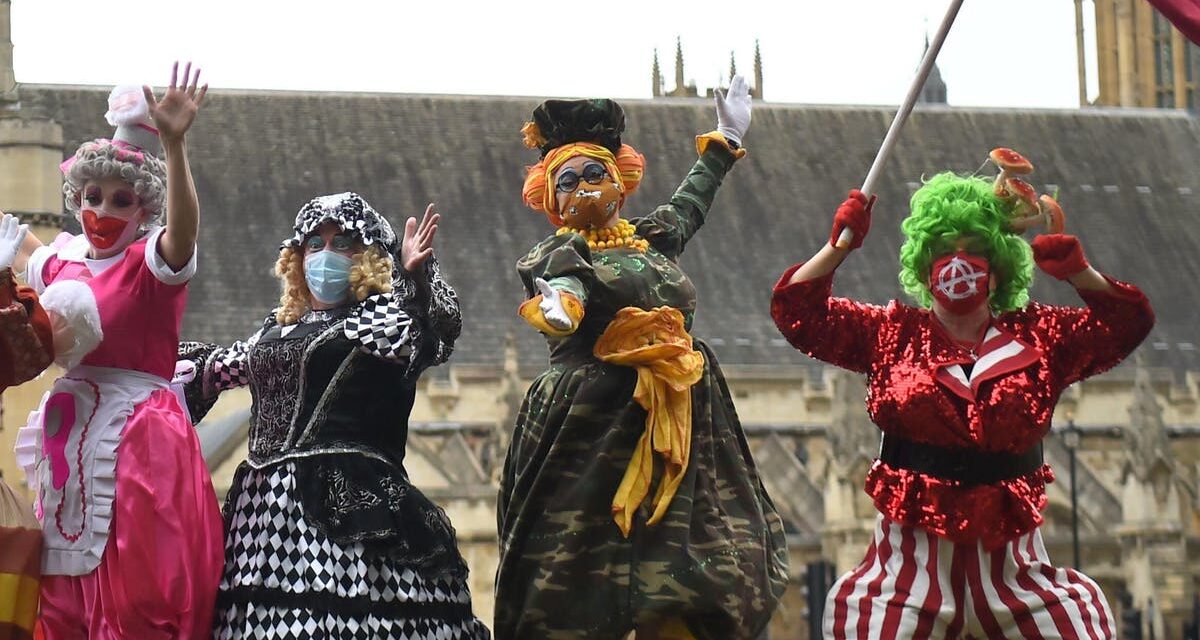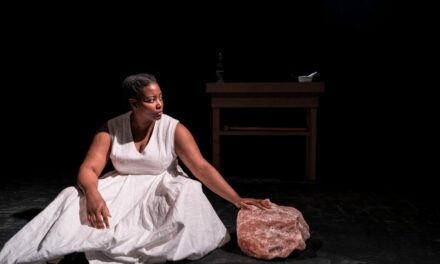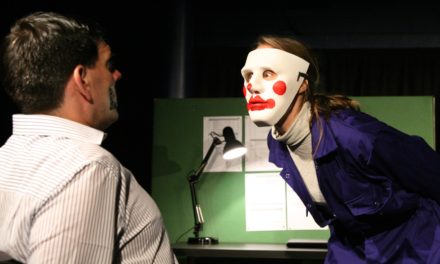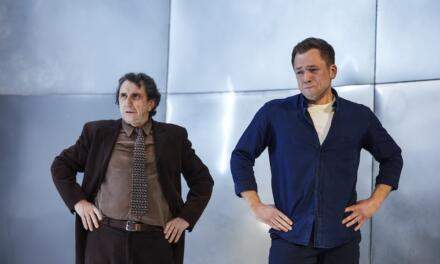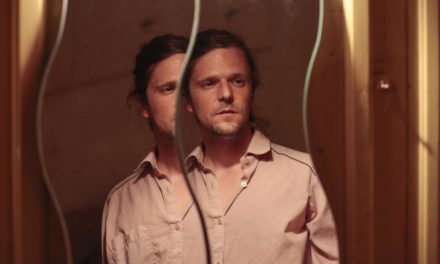Indoor theatre is back. Despite audiences being inscrutable in masks, I’ve seen two packed shows and begun to believe that theatres are finally recovering after a dreadful year. But the outdoor experiments that have kept theatre’s flame alight during the pandemic shouldn’t be cast aside in the process.
The appeal of Zoom productions, livestreams and audio shows may have peaked, but outdoor theatre has been a lifesaver for some companies, with venues as diverse as London’s Arcola Theatre and the world-famous Royal Shakespeare Company venturing outside. I’ve experienced its pleasures first-hand as a playwright collaborating with outdoor specialists Tangled Feet to create a show performed in nature reserves back in September.
The question is what can be learned by opening the theatre doors and stepping outside. Being outside makes theatre more precarious, open to a larger universe of weather and chance. Historically the Athenian tragic festivals embraced and marked the seasons. But in the middle ages the pageant wagons of the York mystery plays wisely filled the city streets in June, and in the 16th century Shakespeare’s open-top Globe was no winter venue: when the frost came, the players retreated to indoor candle-lit spaces to play to patrons.
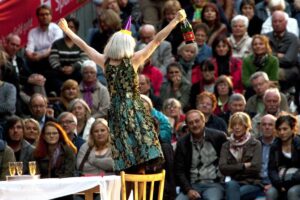
Outside performances have traditionally been rowdy with crowd interaction. Here, a theatre performance at Theater an der Ruhr in Raffelpark, North Rhine-Westphalia, Germany. blickwinkel/Alamy
Exterior spaces re-shape storytelling itself. The theatre historian David Wiles, in his book A Short History of Western Performance Space, sets out a spectrum of different dramatic spaces. Interior, cave-like venues offer darkness and the removal of other stimuli, impossible in the outdoor realm. Inside shows aspire to control and create illusion; outdoor shows cater for interruption and coincidence.
Drama in daylight has to work harder to claim our attention; subtext and subtlety are elusive. Conventions have emerged to deal with this, from masks amplifying Greek performers to the heightened rhetorical language that drives Renaissance plays. Physicality, coarse humour and stock characters informed the work of the popular commedia dell arte troupes, who originated from northern Italy in the 16th century and performed around Europe. In the director Peter Brook’s 1968 classic book “The Empty Space,” the outside is the domain of “rough theatre,” of clowning and defiant horseplay with heckling audiences.
Although some theatre companies remained committed to outside performances, the stage’s significant shift indoors in the 17th century led to as many losses as gains—chief amongst them a reduction in drama’s reach and the long path towards its becoming a luxury good. As soon as a show hits the streets, capacity expands and theatre serves as a kind of artistic commons, owned by all rather than available for a few. Indoor theatre, by contrast, is highly policed. When the show migrates into city squares it becomes closer to a demonstration—more ungovernable, more subversive.
Outdoor performances
This all became clear when I was creating the outdoor show “Murmurations” during the darkest days of the pandemic for two nature reserves, Wicken Fen in Cambridgeshire and Strumpshaw Fen in Norfolk.
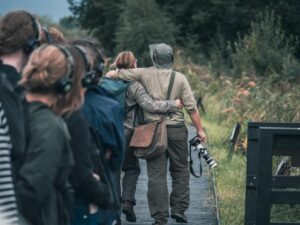
Audience members in headsets watch “Tangled Feet” performers Mario Christofides and Emily Eversden. Thomas Young, Author provided
While the audience were limited in number and equipped with headsets, see above, to pick up the words of actors at a distance, what struck me was the way the performance, with its theme of the extinction crisis intersecting with our renewed desire for open spaces, bled into its environs, with everything in its vicinity becoming charged with meaning.
Likewise interventions from the natural world felt intended: the sardonic gaze of Highland cattle intrigued by the cluster of humans gazing at them, the flight of a raptor mentioned in the text as if cued by supernatural means. In outdoor theatre the proscenium arch (the classic indoor stage) opens up into a much wider aperture and all of life becomes, temporarily, re-enchanted.
It’s too soon to say if this uptick in outdoor theatre is a stopgap or an enduring trend. It would be an enormous shame if our buildings rolled back their experiments—theatre company Arcola Outside for one is braving the darker, colder nights and thereby extending its reach and repertoire. COVID has reminded us that safe inside, we participate in only one stage tradition—while outside, beneath the sky, there are other stories to be told.
This article was originally published by The Conversation on November 5, 2021, and has been reposted with permission. To read the original article, click here.
This post was written by the author in their personal capacity.The opinions expressed in this article are the author’s own and do not reflect the view of The Theatre Times, their staff or collaborators.
This post was written by Steve Waters.
The views expressed here belong to the author and do not necessarily reflect our views and opinions.

